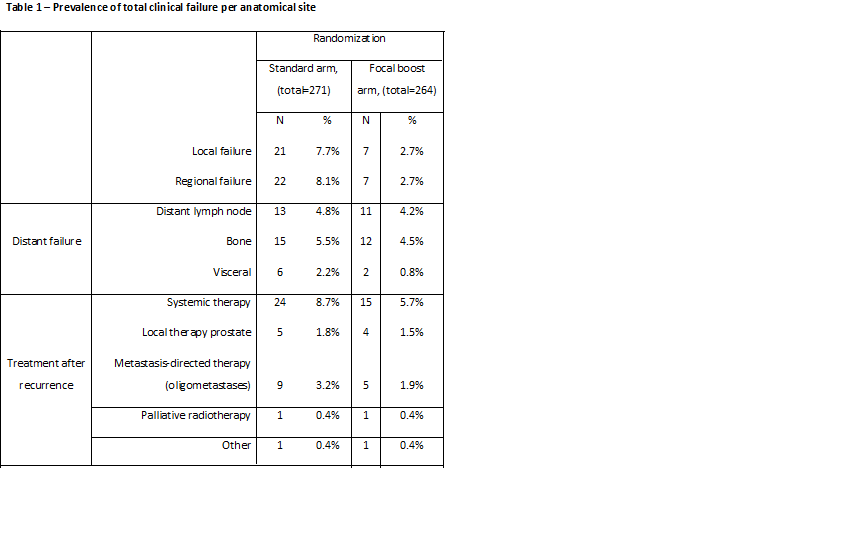Patterns of failure in the phase III randomized controlled FLAME trial for localized prostate cancer
Linda G.W. Kerkmeijer,
The Netherlands
OC-0917
Abstract
Patterns of failure in the phase III randomized controlled FLAME trial for localized prostate cancer
Authors: Veerle H Groen1, Karin Haustermans2, Floris J Pos3, Cedric Draulans2, Sofie Isebaert2, Evelyn M Monninkhof4, Robert Jan Smeenk5, Martina Kunze-Busch5, Hans CJ De Boer1, Jochem RN Van der Voort van Zyp1, LGW Kerkmeijer5, Uulke A Van der Heide3
1UMC Utrecht, Radiation Oncology, Utrecht, The Netherlands; 2UZ Leuven, Radiation Oncology, Leuven, Belgium; 3Netherlands Cancer Institute, Radiation Oncology, Amsterdam, The Netherlands; 4UMC Utrecht, Julius Center, Utrecht, The Netherlands; 5Radboud UMC, Radiation Oncology, Nijmegen, The Netherlands
Show Affiliations
Hide Affiliations
Purpose or Objective
Focal dose escalation in external beam radiotherapy
(EBRT) showed an improved five-year biochemical disease-free survival in the Focal Lesion Ablative
Microboost in prostatE cancer (FLAME) trial without impacting toxicity or
quality of life. The present analysis will focus on the effect of a focal boost
on local failure-free (LFS) and regional plus distant-metastasis-free survival.
Material and Methods
Patients with mostly high-risk localized prostate
cancer were included in the phase 3, multicenter, randomized controlled FLAME
trial. Standard treatment of 77 Gy to the entire prostate in 35 fractions was
compared to an additional boost to the macroscopic tumor up to 95 Gy in EBRT.
LFS and regional plus distant-metastasis-free survival, measured by any type of imaging,
were compared between the treatment arms using Kaplan-Meier and Cox regression
analysis. Dose-response curves were created for local failure (LF) and regional
and distant-metastatic failure using logistic regression.
Results
Five-hundred-seventy-one patients were included in the
FLAME trial. With a median follow-up of 72 months (interquartile range 58-86),
focal boosting decreased LF and regional plus distant failure with hazard
ratios of 0.33 (95% CI 0.14-0.78) and 0.58 (95% CI 0.35-0.93), respectively. Table 1 shows the patterns of failure per anatomical site. Dose-response curves showed that an increased dose to the tumor resulted in
reduced LF and regional plus distant metastasis failure rates.

Conclusion
A clear dose-response relation for LF and regional plus
distant metastatic
failure was
observed, suggesting that adequate focal dose escalation to the intraprostatic
lesions prevents undertreatment of the primary tumor, resulting in a decreased regional
and distant
metastatic failure rate.